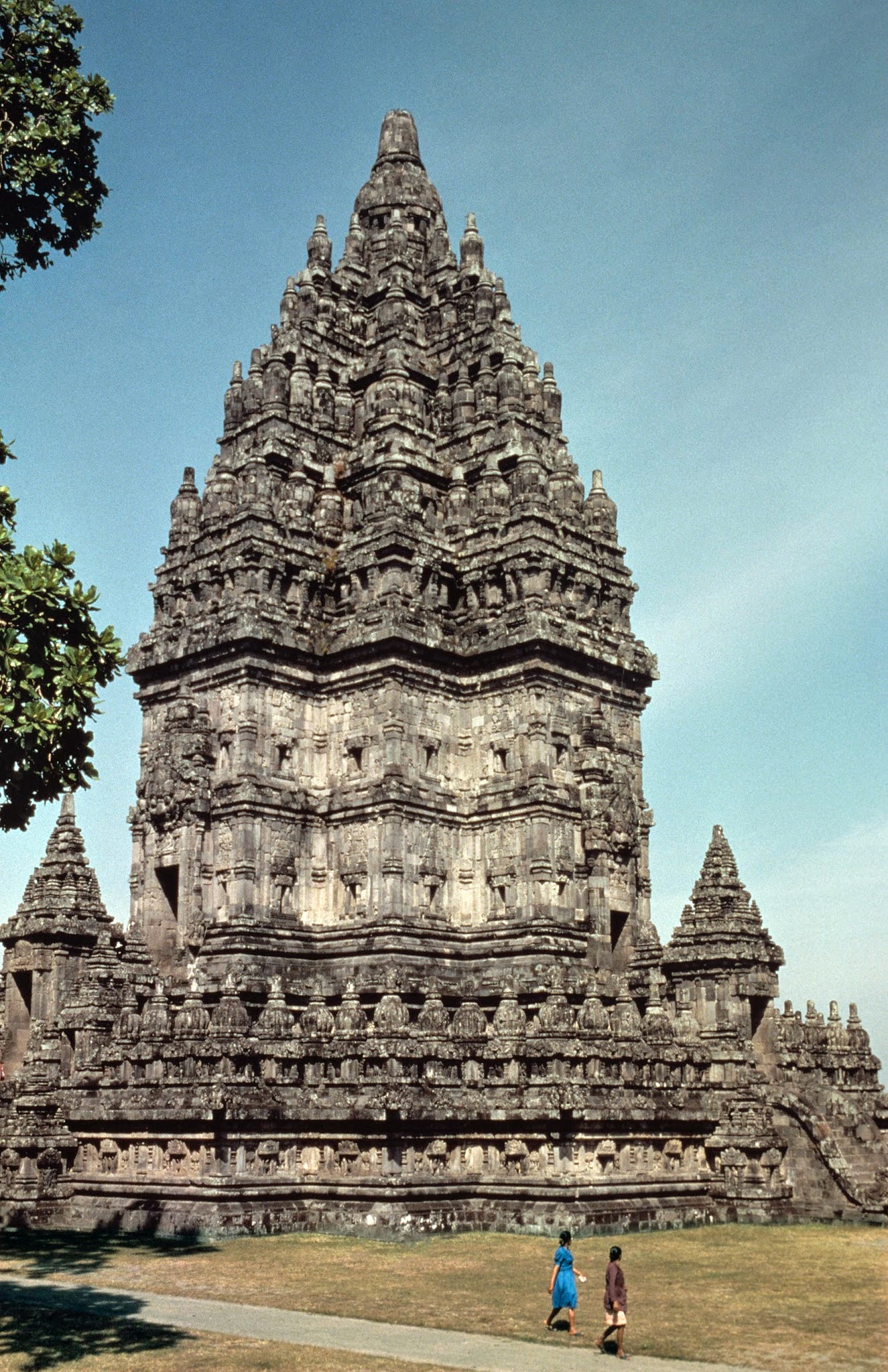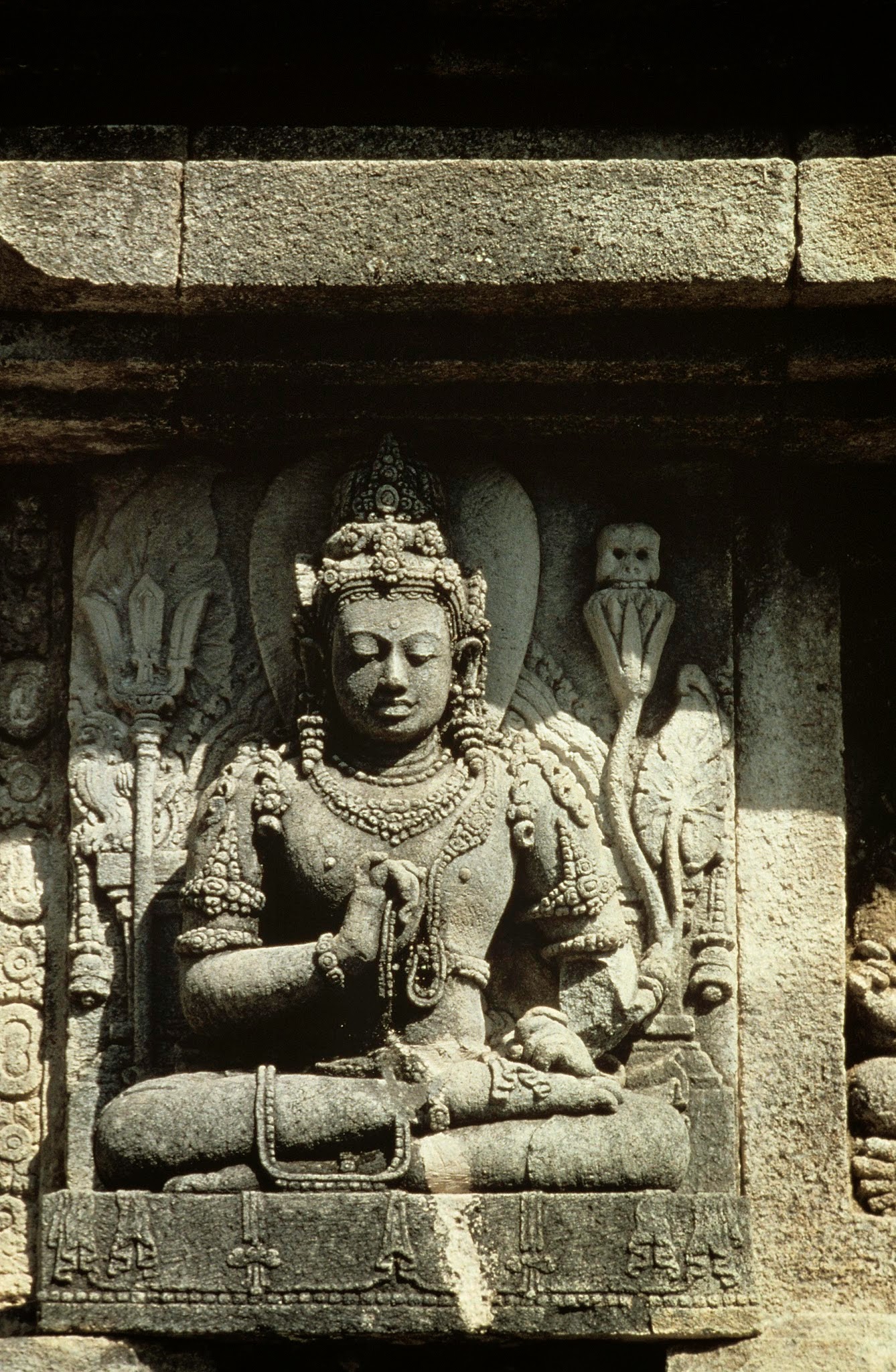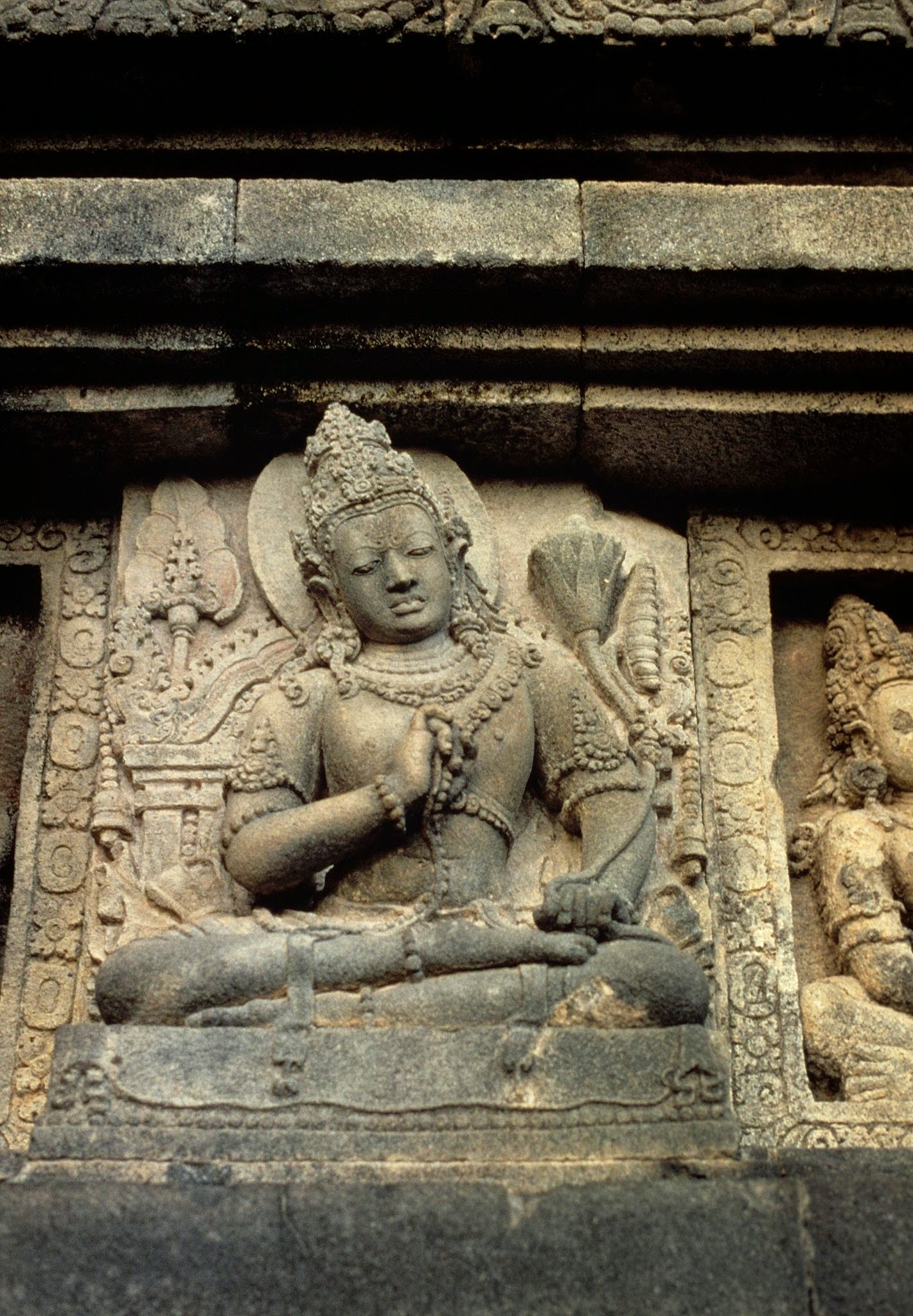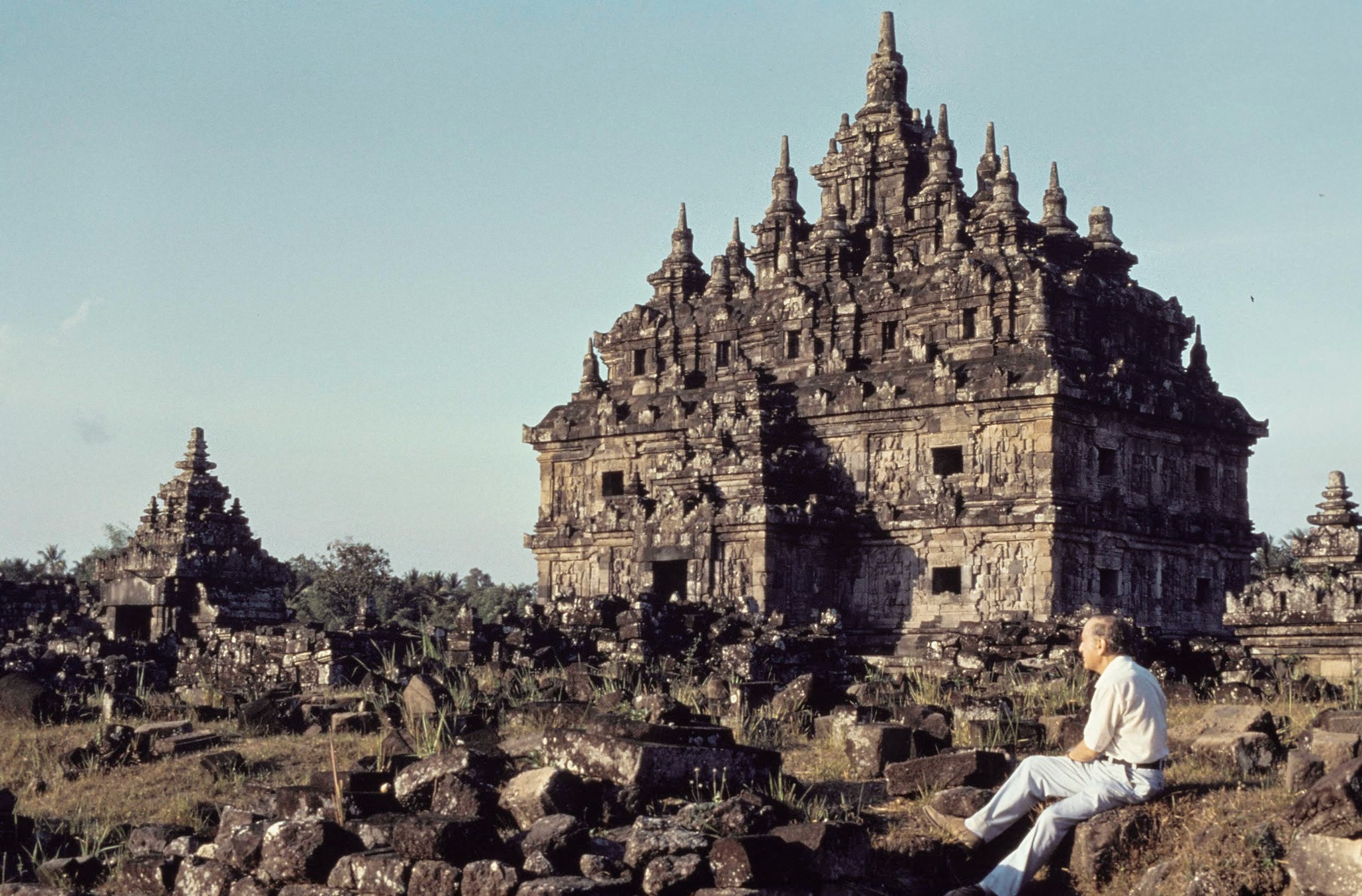Architecture or Sculpture? You Decide: Javanese Temples
I have been stunned recently by the overwhelming beauty of Hindu-Buddhist temples in Java. I think they rival the beauty of any architecture anywhere else in the world. It is interesting to compare these stunning structures with what was being built elsewhere in the world at the time.
It was not yet the period of cathedrals in Europe, gorgeous churches were being built in the Byzantine Empire, and it was just about the end of the Classic Period in Mesoamerica, a time that saw the construction of some of the most beautiful planned cities in the world. I would like to see more attention paid to striking architecture such as this as part of the global “March of Time in Art and Architecture.”
 |
| Java, Indonesia, Siva Temple, Loro Jonggrang, Prambanan, ca. 856–915 CE. © Davis Art Images. (8S-10184) |
It is generally believed that the earliest inhabitants of the Indonesian archipelago were of Indian or Burmese origin. Later migrants known as Malays came from Southern China and Indochina at around 3000 BCE. Since the early period, the Javanese established trade with India and China. Prior to the arrival of Buddhism and Hinduism to Java, the native inhabitants practiced a form of animism.
Hinduism was introduced from India through trade during the first century CE. Hindu kingdoms were established in Kalimantan, Sumatra, and Java between the 400s and the 1200s, some of which had also absorbed Buddhist influences. Javanese architecture began under Hindu influence, with a surge of Buddhism from about 750 to 850 (as evidenced by the monumental Stupa in Borobudur), and a second flourishing of Hindu architecture that lasted from the late 800s until the 1300s with the coming of Islam.
The Siva Temple at Loro Jonggrang is the most preeminent of Javanese temples. It is part of a complex of at least 200 subsidiary temples and stupas, built of brick. The Siva Temple shows the tendency of late medieval Hindu architecture to be placed on larger and larger platforms. The tower of the temple is based on the Dravidian pyramidal style temple towers in Indian architecture, with much more elaboration in sculpture programs.
The idea of the sacred mountain evolved in temple architecture during the late 600s in Southeast Asia. The mountain (Mount Meru, sacred in Hinduism, Jainism, and Buddhism) was considered the axis of the universe, and, as in Western pyramids, ziggurats, and even cathedrals, provided access to the divine. While the basic form of the temple ("candi") in Southeast Asia was similar from region to region, the elaborate and exuberant sculptural programs on the exterior are of greatest impact. The reliefs around the pedestal/platform of the temple show scenes from the Ramayana interspersed with niches containing sacred figures. The sculptural style of Prambanan is a combination of the classic Shrivijaya Kingdom (750–850 CE) style seen at Borobudur, and elements that hark back to the Gupta period (320–647 CE) in India. The entrances on all four sides are a tradition dating back to early stupas and other Buddhist architecture.
 |
| Java, Indonesia, Siva Temple, Loro Jonggrang, sculpture: Guardian of a Direction. © Davis Art Images. (8S-10187) |
 |
| Java, Indonesia, Siva Temple, Loro Jonggrang, sculpture: Rama. © Davis Art Images. (8S-10188) |
Here’s another beautiful temple in the same part of Java as Loro Jonggrang:
 |
| Java, Candi Plaosan, ca. 830–850 CE, Prambanan Plain, near Yogyakarta. © Davis Art Images. (8S-10183) |
This temple, where Buddhism was worshipped, is part of a complex of 248 smaller temples and stupas. Ironically, it was only used until about 1006, when a nearby volcano erupted and covered everything in volcanic ash.
Correlations to Davis programs: Explorations in Art Grade 1: 1.1; Explorations in Art Grade 2: 6.31, 6.33; Explorations in Art Grade 3: 4.20; Explorations in Art Grade 4: 3.14, 3.18; Explorations in Art Grade 6: 4.20; Exploring Visual Design: 6; A Global Pursuit: 8.5; Discovering Art History: 4.5


Comments